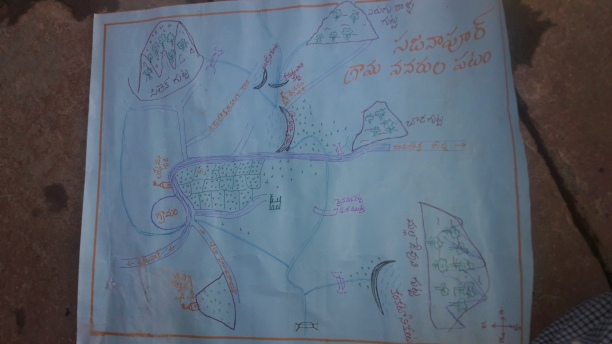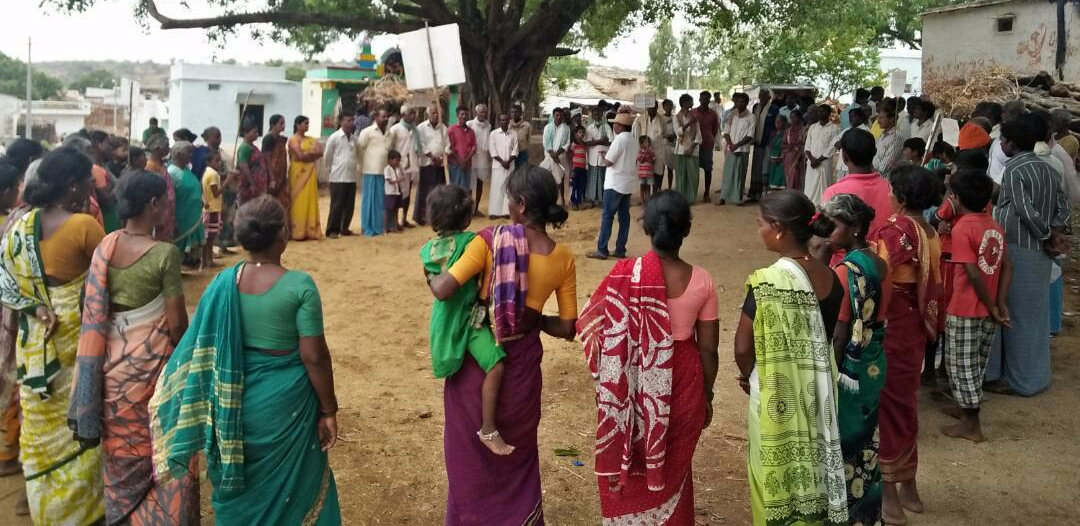-Ravi Prasad M, Jyothirmayee K, Bhavana Rao K
In the current era, the need for effective and efficient resource management practices has become increasingly evident, especially in the case of water. India with a groundwater extraction rate of 250 million cu. m annually, has the highest ground-water extraction rate in the world. Of the total 80% of the water that is utilised for agriculture, 65% is extracted from groundwater (Rajendra 2016)[1]. As 54 % of the country gets affected by water crisis, it manifests itself in acute agrarian distress resulting in farmer suicides.
Unlike the regions of the Indo-Gangetic plan with alluvial aquifers, the southern semi-arid regions have hard crystalline rocks and shallow aquifers supporting very low aquifer recharge. Thus, extraction and declining water levels continues to adversely affect the population as a whole, particularly the farmers. Awareness and understanding of these issues and building region-centric alternative technologies for water conservation is the need of the hour.
‘Jalme Jeevanam’
On 22nd March, on the occasion of World Water Day, National Bank for Agriculture and Rural Development. (NABARD) in collaboration with Centre for Environment Education (CEE) and other local organisations launched Jalme Jeevanam (Water is Life) campaign in around 1,00,000 villages across 200 districts to create awareness about conservation and preservation of water resources. Communication Tool kits developed by CEE were provided to all the organisations for effective implemetation of the campaign activities. A number of stakeholders like the officials from Mahatma Gandhi National Rural Employment Guarantee Act (MGNREGA), Gramsabha. blocklevel agriculture department, coperative banks, ASHA and Anganwadi workers also actively participated in the campaign.
As a part of the initiative , WOTR organised Jalme jeevanam campaign from 19th May to 14th June 2017 in 50 villages of Damargidda and Narayanpet blocks of the Telangana state with the help of our representatives, identified as ‘Krishi Jaldoots’ and village-level volunteers.

Activities
Initiating the campaign with a rally, the group walked around the village to identify spots where water was being wasted.Then, several meetings moderated by the self help groups were conducted to understand the water shortage problems faced by the communities. Keeping in mind the conclusions drawn through observations and the meetings held, water conservation strategy was developed through several activities by the villagers. Resource mapping of the village was undertaken with inputs from different community members .


Approximations on demography of the village and amount of rainfall received were drawn through intensive discussions. Our team members explained and carried out demonstrations for efficient water management practices like recharging of groundwater, rainwater harvesting, methods of wastewater recycling, and construction of trenches, bunds, check dams and farm ponds. Few farmers who had already adopted such practices shared their experiences with others.

Outcome of the campaign
Over 2,500 people were sensitized on the optimum usage of water for household and farm allied activities. The community members pledged to implement the various strategies designed by them. Moreover, the success of the campaign was extensively covered in local Telangana newspapers. The links of the articles are as follows:
- http://epaper.andhrajyothy.com/c/20210503
- http://epaper.sakshi.com/c/20211913
- http://epaper.andhrajyothy.com/c/20211720

[1] Rajendra P. Sishodia, Sanjay Shukla, Wendy D. Graham, Suhas P. Wani, 2016, Bi-decadal ground water level trends in a semi-arid south India region: Declines, causes and management, Journal of Hydrology:Regional Studies, Elsevier





